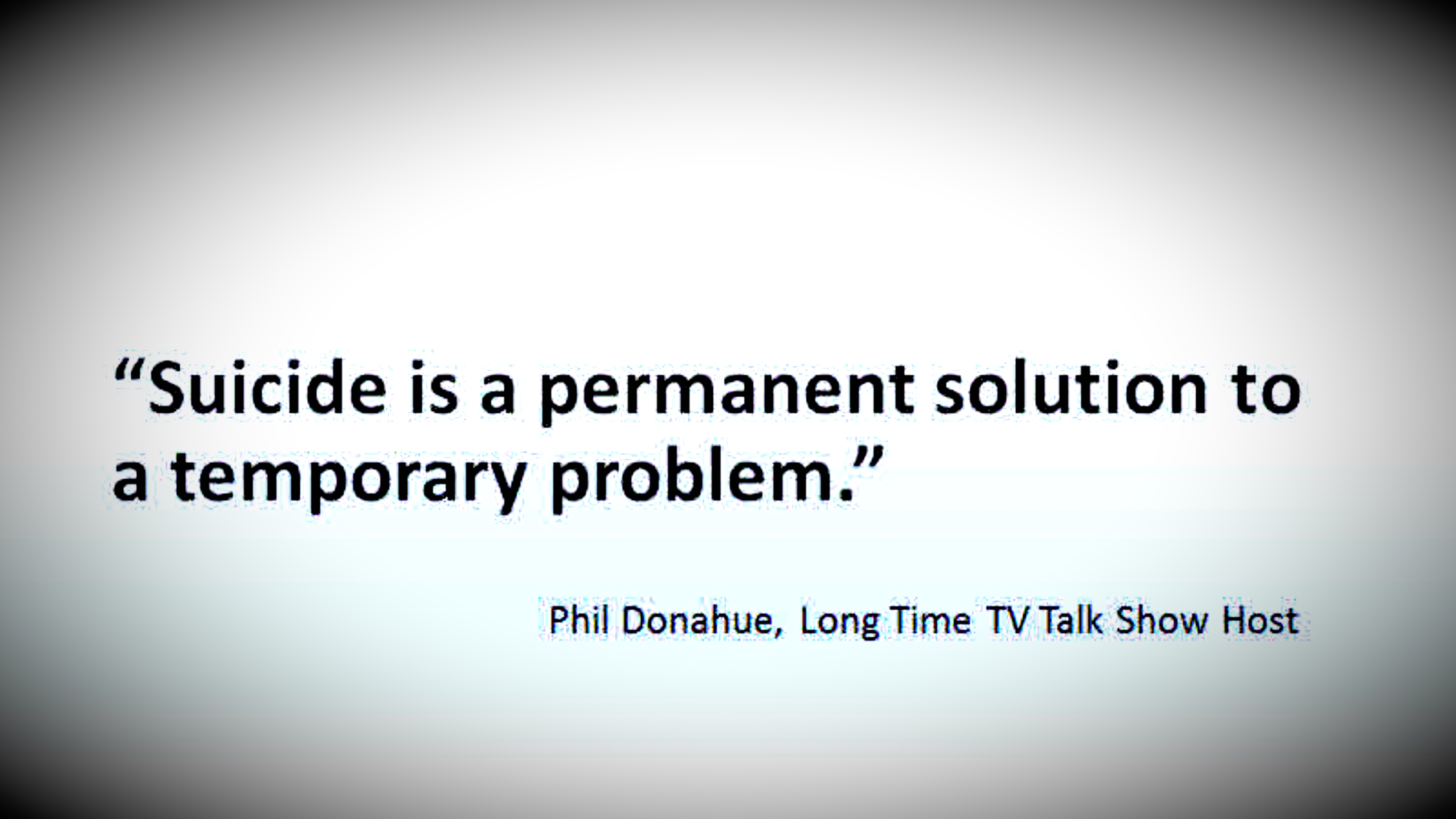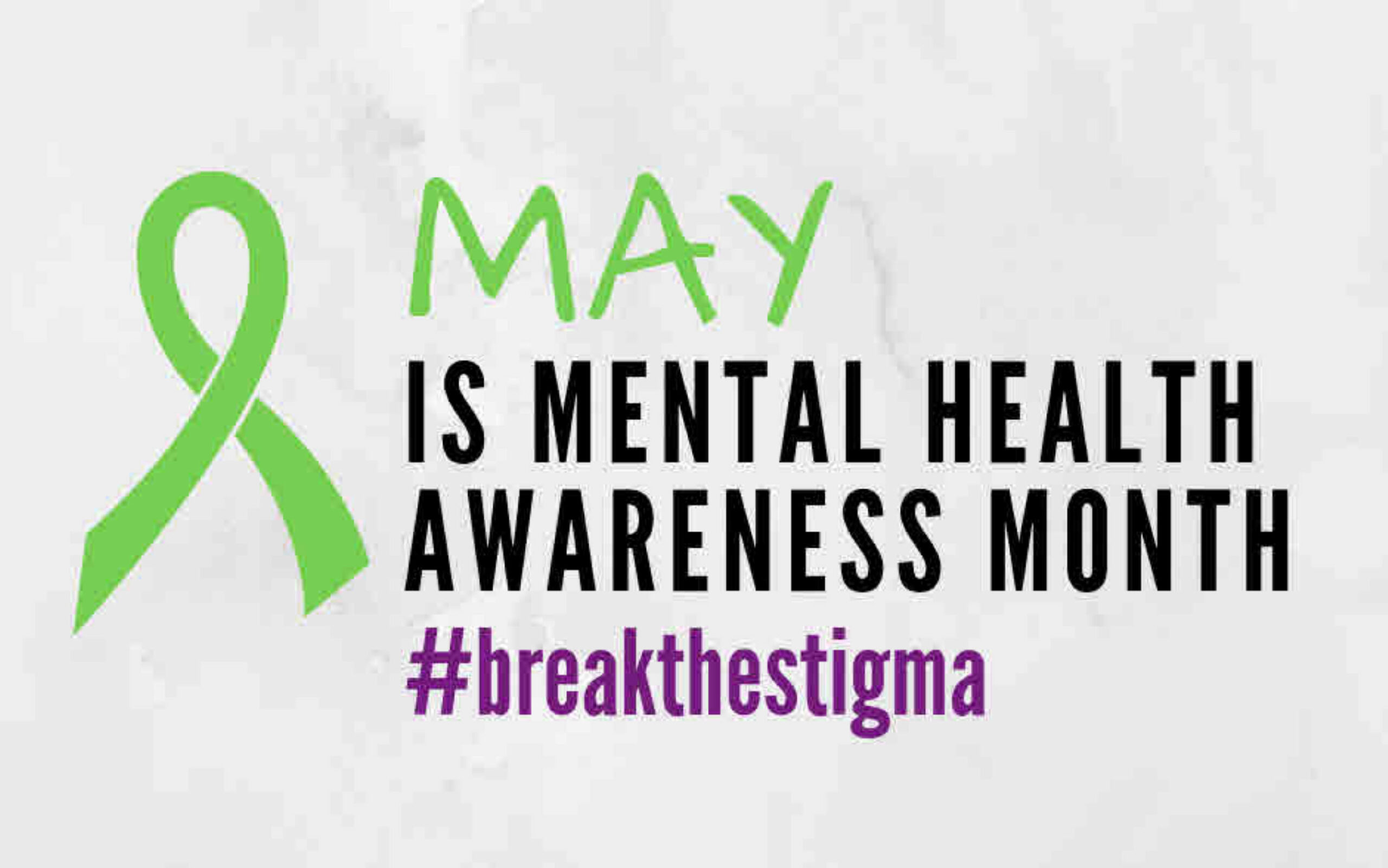The intent is different, though one can lead to the other

This is an excerpt from Healing Self-Injury: A Compassionate Guide for Parents and Other Loved Ones, by Janis Whitlock, PhD, and Elizabeth Lloyd-Richardson, PhD.
#JamesDonaldsononMentalHealth –
Welcome to the “next chapter” of my life… being a voice and an advocate for #mentalhealthawarenessandsuicideprevention, especially pertaining to our younger generation of students and student-athletes.
Getting men to speak up and reach out for help and assistance is one of my passions. Us men need to not suffer in silence or drown our sorrows in alcohol, hang out at bars and strip joints, or get involved with drug use.
Having gone through a recent bout of #depression and #suicidalthoughts myself, I realize now, that I can make a huge difference in the lives of so many by sharing my story, and by sharing various resources I come across as I work in this space. #http://bit.ly/JamesMentalHealthArticle
It’s not unusual for young people who are struggling with painful feelings to engage in self-injury — things such as cutting, burning or scratching themselves until they bleed. Knowing that a child is intent on harming herself is very upsetting to parents, and many worry that #self-injury is a sign that their child is #suicidal.
#Self-injury and #suicidalbehaviors — imagining, planning or attempting #suicide — are related, but the relationship between the two is confusing. Because they can look similar, it can be very difficult to tell the difference between them. But there are important differences in the intention as well as the danger: #Self-injury is virtually always used to feel better rather than to end one’s life. Indeed, some people who self-injure are clear that it helps them to avoid #suicide. In fact, the technical term for #self-injury is non-suicidal self-injury, or NSSI.
Differences
#Self-injury and #suicide differ in multiple ways, including:
The intent: The intent of #self-injury is almost always to feel better, whereas for #suicide it is to end feeling (and, hence, life) altogether.
The method used: Methods for #self-injury typically cause damage to the surface of the body only. Suicide-related behaviors are much more lethal. Notably, it is very uncommon for individuals who practice #self-injury and who are also #suicidal to identify the same methods for each purpose.
Level of damage and lethality: #Self-injury is often carried out using methods designed to damage the body but not to injure the body badly enough to require treatment or to end life. #Suicide attempts are typically more lethal than standard NSSI methods.
Frequency: #Self-injury is often used regularly or off-and-on to manage stress and other emotions. #Suicide-related behaviors are much more rare.
Level of psychological pain: The level of psychological distress experienced in self-injury is often significantly lower than that which gives rise to #suicidalthoughts and behaviors. Moreover, #self-injury tends to reduce arousal for many of those who use it and, for many individuals who have considered #suicide, is used as a way to avoid attempting #suicide.
Presence of cognitive constriction: Cognitive constriction is black-and-white thinking — seeing things as all or nothing, good or bad, one way or the other. It allows for very little ambiguity. Individuals who are #suicidal often experience high cognitive constriction. The intensity of cognitive constriction is less severe in individuals who use #self-injury as a coping mechanism.
Aftermath: Although unintentional death does occur with #self-injury, it is not common. The aftermath of a typical #self-injury incident is short-term improvement in sense of well-being and functioning. The aftermath of a suicide-related gesture or attempt is precisely the opposite.
Common risk factors
Despite differences and intention, #suicidalthoughts and behaviors and self-injury do share common risk factors. Some of these include:
- High emotional sensitivity
- A history of trauma, abuse, or chronic stress
- Extreme emotion or lack of emotion
- A tendency to suppress emotions coupled with few effective mechanisms for dealing with emotional stress
- Feelings of isolation (this can be invisible in people who seem to have many friends/connections)
- A history of alcohol or substance abuse.
Because of these common risk factors, it is important for you to know that youth who self-injure are also at increased risk for suicidality. Our work shows that about 65 percent of youth who #self-injure will also be #suicidal at some point (though many will not go beyond having #suicidalthoughts). For many, self-injury is used alone or in combination with other behaviors as a way to keep emotional distress or disconnectedness at a manageable level.
Although #suicidalthoughts and behaviors can occur before self-injury is used, in most cases, #suicidalthoughts and behaviors coincide with or come after self-injury starts. It is also important to note that only 36 percent of adults who self-injure in the United States reported having ever felt #suicidal while engaging in self-injury, meaning that the majority of individuals who injure have never felt #suicidal while engaging in #self-injury.
Reducing inhibition to #suicidalbehavior
Although #self-injury does not cause #suicide, the other important thing to know about the relationship between #self-injury and #suicide is that the very act of engaging in self-injury reduces inhibition to #suicidalbehavior if someone becomes #suicidal. In other words, having “practiced” injuring the body repeatedly makes it easier to actually injure the body with #suicidalintent.
Other factors that can place someone at greater risk of moving from #selfinjury to #suicide include:
- Greater family conflict and poor relationship with parents
- More than 20 lifetime NSSI incidents
- Psychological distress in the past 30 days
- A history of emotional or sexual trauma
- Greater feelings of hopelessness
- Identifying self-hatred, wanting to feel something, practicing or avoiding suicide as reasons for self-injury
- High impulsivity and engagement in risky behaviors
- Substance use
- A diagnosis of major depressive disorder (MDD) or PTSD
These risk factors may be present individually or in clusters. The more of these your child has, the higher his or her risk is of at least having #suicidalthoughts (this is called “suicidal ideation”).
What is especially important for you to know is that one of the most powerful protective factors against moving from #self-injury to #suicide is a feeling of connectedness to parents. Indeed, the consistency with which parents show up in our studies as important sources of support for their children is one of the reasons we wrote this book!
Janis Whitlock, PhD, is the founder and director of the Cornell Research Program on Self-Injury and Recovery. Elizabeth E. Lloyd-Richardson, PhD, is an associate professor of psychology at the University of Massachusetts, Dartmouth. This piece is an excerpt from Healing Self-Injury: A Compassionate Guide for Parents and Other Loved Ones, from Oxford University Press.

James Donaldson is a Washington State University graduate (’79). After an outstanding basketball career with WSU, he went on to play professional basketball in the NBA with the Seattle Supersonics, San Diego/L.A. Clippers, Dallas Mavericks, New York Knicks, and Utah Jazz. He also played for several teams in the European Leagues in Spain, Italy, and Greece, and he toured with The Harlem Globetrotters to wrap up his career. James was an NBA All-Star in 1988 while playing center for the Dallas Mavericks. In 2006, James was inducted into the Pac-10 Sports Hall of Fame and also the Washington State University Athletic Hall of Fame. In 2010, James was elected as a board member for the NBA Retired Players Association.
James frequently conducts speaking engagements (motivational, inspirational, educational) for organizations, schools, and youth groups.
In 2010, James was the recipient of the NBA Legends of Basketball ABC Award, awarded for outstanding contributions in Athletics–Business–Community.
He believes in being a role model for success and professionalism to the scores of young people to whom he devotes so much of his time. He currently serves on several boards and committees and is a member of many organizations.
James believes in developing relationships that create a “Win-Win” environment for everyone involved, and in being the best he can be!
For more information about James Donaldson or to request he speak at your event, contact him at:
www.StandingAboveTheCrowd.com
JamesD@StandingAboveTheCrowd.com
1-800-745-3161 (voicemail & fax)
James Donaldson is the author of “Standing Above The Crowd” and “Celebrating Your Gift of Life” and founder of the Your Gift of Life Foundation which focuses on mental health awareness and suicide prevention, especially pertaining to our school aged children and men.
If you’re interested in having James come and speak to your group of young adults, business entrepreneurs, aspiring political and community leaders, and athletic teams, please contact him at jamesd@yourgiftoflife.org and or leave a personal message for him at 1-800-745-3161. Keep up with him and read about how he is reaching out and making a difference in the lives of so many around the world at www.yourgiftoflife.org



